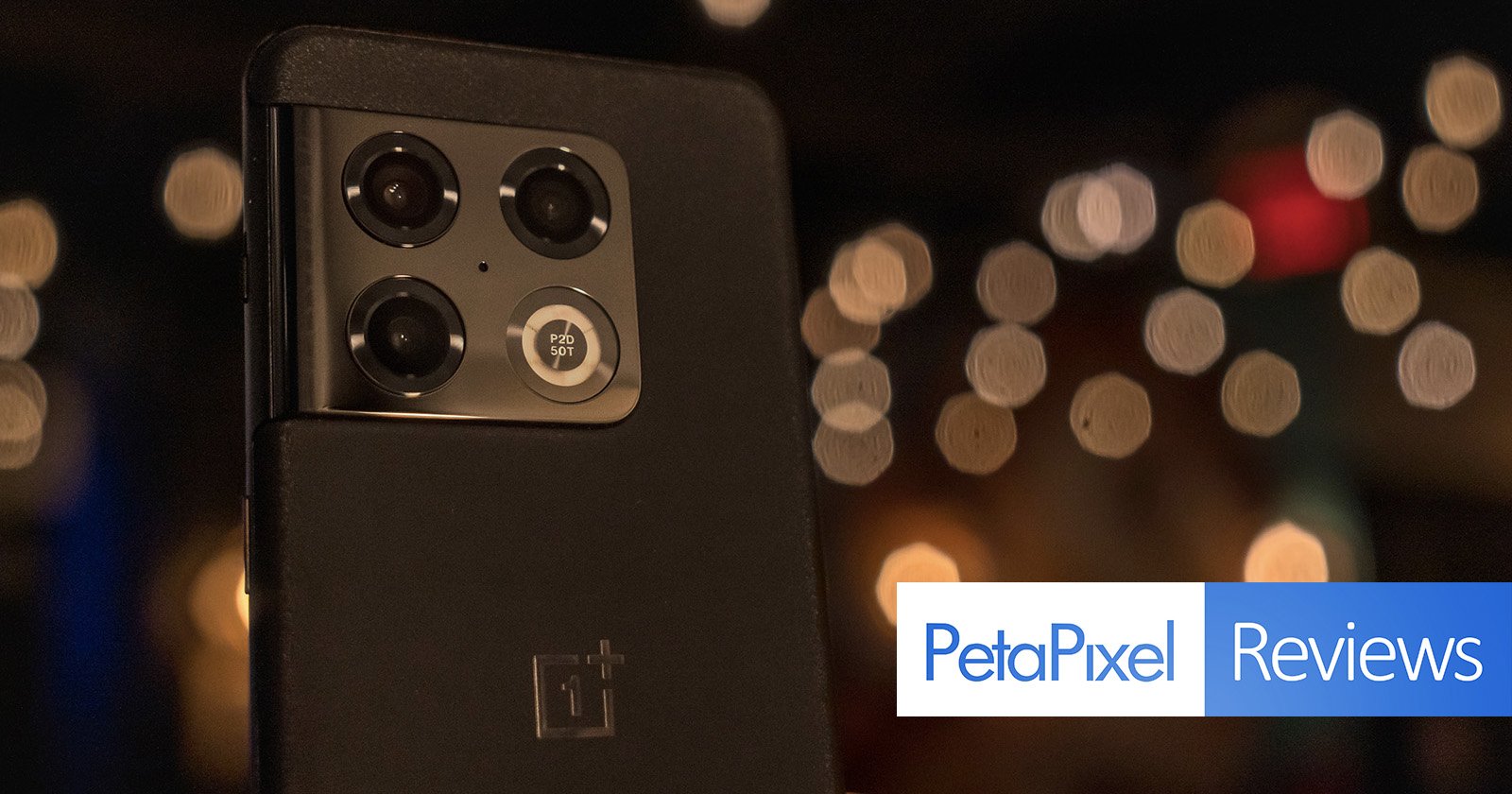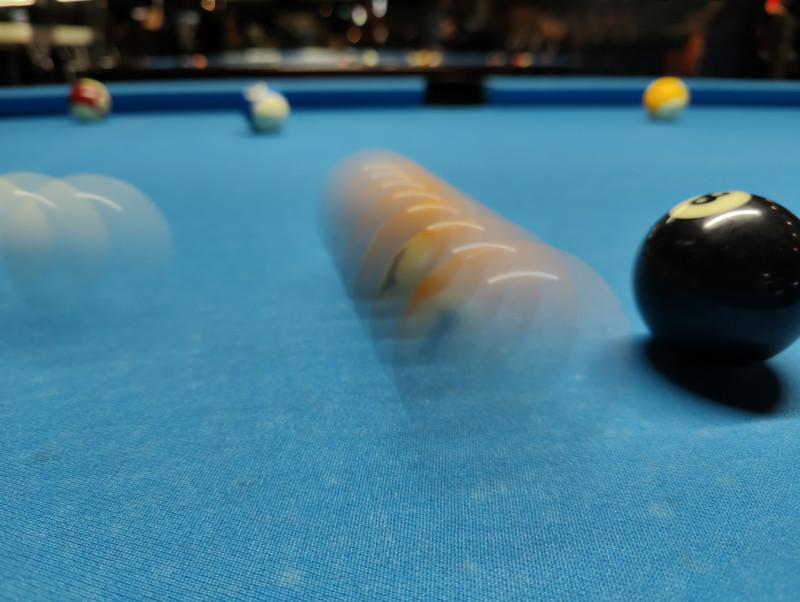
The OnePlus 10 Pro has finally launched outside China, and the camera array is the centerpiece to illustrate how much it wants to be among the best you can get your hands on.
Last year’s flagships were both a statement and an experiment. On the one hand, the excellent design and functionality made it clear they belonged in the upper echelon of Android phones. On the other, partnering with Hasselblad for camera output was to serve notice that OnePlus was serious about competing with the best.
The 10 Pro takes those two elements and pushes them forward in ways that feel more perceptible, making a stronger case that OnePlus and Hasselblad are finally figuring out how they complement one another. The results could certainly improve, but as is, there are things to like with what’s here right now.
Design and Build
I’ve admired OnePlus for its taste going back several years now, and the 10 Pro carries on the momentum. The difference this time is how much more real estate the ceramic-covered rear camera array takes up. It’s arguably bigger than just about any other phone out there, though that unofficial crown may be up for grabs as we see what else is coming this year.
My review unit came in the Volcanic Black variant, with Emerald Forest being the other (which looks great), so OnePlus at least offers one colorful option. Despite the more neutral look of the black one, it still looks elegant, even if the camera bump is the scene-stealer at every turn. Whether face down or propped up to take a photo, it’s hard not to notice it. The bump even has a glossy finish that can be handy as a makeshift mirror when taking selfies with the rear cameras.
![]()
The other design principles largely follow the previous 9 Pro as far as where the buttons, ports, front camera, and wireless charging coils are situated. While the display is the same 6.7-inch AMOLED QHD+, OnePlus says its refresh rate adjusts faster between 1Hz and 120Hz, ultimately helping on the battery life side of things. The screen was also calibrated at two levels of brightness at 500 and 100 nits, with the benefit being better color accuracy at both high and low brightness.
Powering the device from the inside is the new Snapdragon 8 Gen 1 processor, Qualcomm’s latest chipset built on 4nm architecture. My unit had 8GB of RAM and 128GB of storage, which is the standard configuration OnePlus is going with, unless newer variants are coming later on.
![]()
In the U.S., T-Mobile is the exclusive carrier selling the phone, though it will also be available through OnePlus.com, Best Buy, and Amazon. The 10 Pro can run on any 4G LTE network, whereas it appears to be limited to T-Mobile’s 5G network. OnePlus also promises three major Android version updates, plus four years of security updates.
Camera Features
The 10 Pro retains the same 48-megapixel main camera (23mm equivalent) using Sony’s IMX789 image sensor custom-made for OnePlus. It’s the same 1/1.43-inch size, peering through the lens with the same f/1.8 aperture.
In many ways, OnePlus — perhaps in coordination with Hasselblad — chose to harmonize the three rear cameras as much as possible. The 50-megapixel ultra-wide (14mm equivalent) gets a different look by going with Samsung’s JN1 sensor, partly as a way to expand the field of view from 110-degrees all the way up to 150-degrees. The standalone 150-degree mode is the widest I’ve seen on any phone to date, and it includes a separate fisheye setting that reminds me of what 360-degree cameras were like not too long ago.
The 8-megapixel telephoto (77mm equivalent) is also back with 3.3x optical zoom, optical image stabilization, and a new super resolution algorithm that’s designed to help sharpen and clear up images using hybrid at up to 30x.
![]()
Despite the bigger bump in the back, OnePlus ditched the 2-megapixel monochrome camera it brought into the 9 Pro, which is probably for the best. Its physical presence was lost because its software component was buried within the filters available in the camera app’s interface. You would’ve only known if you bothered shooting in black and white anyway.
All three of these rear lenses can shoot in 10-bit — very likely courtesy of Hasselblad’s input. The cameras also capture photos using the DCI-P3 color gamut, which both brands claim delivers 25% more coverage than sRGB in other phones. All told, the 10 Pro is supposed to process 64 times more color than smartphones that shoot in 8-bit color.
What OnePlus doesn’t clarify is that 10-bit is an elective option within the camera app’s settings, and you can only shoot in it with Photo and Night mode. Moreover, the phone saves the images in HEIF format, and can only display them on compatible devices or apps that support 10-bit color.
![]()
I should also mention that Hasselblad’s contribution here extends to three new “Master” filters you can find when tapping the filter icon. They’re called radiance, security, and emerald, offering a slightly different tonality with each one.
Apart from how good OxygenOS is as an Android overlay, the camera app keeps its familiar layout. Settings and modes are where they should be, and you can always customize the mode tray by going to More and tapping the pencil icon to add or rearrange them. The aforementioned 150° mode and Long Exposure are the two newest photo modes, and OnePlus added two new video modes, too.
Image Quality
Main camera
It’s hard to quantify the exact metrics OnePlus talks about when it comes to color, but my eyes told me the resulting images followed the path laid out last year with the 9 Pro. I considered it “neutral” when writing about it at that time, and I think that still fits with the 10 Pro. One thing to remember is that the main wide camera shoots at 12-megapixels by default because of pixel binning. The 48-megapixel mode is a separate option within the interface.
I left AI Scene Enhancement off as I tested the camera because it would sometimes saturate color or shift white balance to cooler or warmer tones when it wasn’t necessary to do so. The shots I generally took impressed me for the level of detail and color accuracy, even if it wasn’t perfect all the time.

HDR doesn’t get the same attention now because it’s a staple feature, but its presence is important in a camera like this for balancing composition. Whether it was OnePlus or Hasselblad who was largely behind it, HDR complements color output in good ways, be it in bright daylight or darker nights. As always, though, the exposure slider is vitally important to help the cause for the simple fact the camera app often skews exposure a little brighter every time. Sliding it down just a little usually delivered a better shot. It seems to me the 10 Pro exhibits better dynamic range, though OnePlus never really mentions it in relation to this device.
Since this is using the same sensor as last year, software affects output more than anything else. The Snapdragon 8 Gen 1 chip processes and renders images faster, which serves the whole camera array well.
Ultra-wide
Going with a different sensor for this camera that is also the same size as the previous one suggested that there might be at least some difference in output here, and to a degree, there is. Its low-light performance gets a boost, only OnePlus markets the 150-degree mode as the bigger story. Sure, it’s wider than anyone else, but it’s also fraught with fringing on the edges, so it’s not a total win.
![]()
The company’s engineers and developers addressed that with the Freeform Lens in the 9 Pro, and that still applies when shooting at the standard 110-degrees, so you still come away with a very capable ultra-wide that way. The 150-degree mode, while cool on its own, isn’t yet a game-changer, and shooting with that wide a field of view isn’t always practical.

While not “ultra-wide” unto itself, Hasselblad’s XPan mode is also back, shooting at a 65:21 aspect ratio with wide focal lengths of 30mm and 45mm. It’s neat to play with, but ultimately works the same as when OnePlus brought it into the 9 Pro.
Telephoto and Hybrid Zoom
I feel like this is where OnePlus dropped the ball a little. On paper and in practice, the telephoto lens looks and feels the same as what it can do from the 9 Pro. Every time I look at the rear camera array, I wonder why there wasn’t room underneath for a periscope lens that could go further than 3.3x. I get that the focus was more on improving software to make hybrid zoom shots better, but glass will always trump software for zooming, in my opinion, so despite any visual improvement here, it feels like a missed opportunity.
![]()
And by “improvement,” I’m referring to a fairly low bar set last year with the 30x hybrid zoom. The results were terrible then, and only a little better now. I found much better output when shooting at 10x, which I would say is the sweet spot for melding the optical and digital zooms together for a usable image.
Pro Mode
Pro mode is one of the jewels in this camera layout, and the big addition is the ability to shoot with all three lenses. A previous software update brought the same access to the 9 Pro, so there’s no exclusivity here, but it’s still nice to get both access and improved output. You can still shoot in 12-bit RAW — yet another plus for OnePlus. You just can’t shoot in 150-degrees or fisheye in Pro.

There’s also RAW+, a newer mode that captures a 12-bit RAW image that brings in computational software to augment the image. It is, to a degree, the automatic Photo mode, only with RAW output, letting you process the image yourself later on in your preferred editing tool. You can turn histogram and focus peaking on to add more control over how you shoot in Pro to go with the standard controls you otherwise get (shutter, ISO, EV, focus, and white balance).

OnePlus and Hasselblad tried to not only work on color, but also noise reduction, and that’s where RAW photos often show the best results. It’s just not a dramatic difference. If you’re so inclined, you might be able to play around with taking shots at different exposures and bracket them together in Photoshop, but that’s not always practical unless you really care about the subject you’re capturing.


Still, this collaboration between the two brands seems to be yielding some fruit, as overzealous sharpening or processing is less obvious with the 10 Pro, carrying on from what I saw with the 9 Pro. Hopefully, future software updates keep on improving that.
Night
I won’t go too in-depth on this mode because it’s largely an incremental upgrade. Is it better than the 9 Pro? Sure, though I would expect no less from a flagship. That marginal improvement is fine when compared to the same brand from a year ago, but I didn’t see enough from nighttime output to suggest OnePlus overtakes competitors when shooting at night.
Part of the problem, at least to me, is that dynamic range isn’t subtle when it needs to be. Just because a building is lit up, it doesn’t mean that its brightest points need to be super bright. There needs to be a balance in how shots like that come out for the simple fact it’s all but impossible to salvage overexposed pixels in an image. Especially one taken from a phone.
![]()
I’ve said it before, and I’ll say it again: I’d like to see OnePlus place some of the control in users’ hands. Let us stop the exposure at any point, or at least offer some form of adjustment beyond a simple exposure slider, since not all low-light and night scenarios are equal.

Long Exposure mode is different altogether, yet follows much of what’s been done on other devices, like the Vivo X70 Pro+ and Xiaomi 12 Pro. OnePlus offers moving vehicles, water and clouds, and light painting as set choices, with the ability to also set exposure time between 0.5 and 12 seconds. It’s fun to experiment with, and I tried using them in different ways to gauge output.
Video Features
The OnePlus 10 Pro can record video in 8K at 24 frames per second (fps), whereas 4K video can go at 30, 60, or 120fps, all but mirroring what was available in the 9 Pro. Where things change is with new modes, like Film, which is essentially Pro mode for video. Dual View Video uses the rear and front cameras together, which is probably something travelers, vloggers, and TikTokers might find useful for capturing reactions while shooting the scenery around them.
OnePlus did clean up a few things with the interface. You can no longer shoot video in Night mode, as that’s now part of the regular Video mode. Same with Portrait Blur, which is an option within Video that lets you control bokeh for footage. You can do these things with all the lenses, save for some exceptions, like how blurring won’t work with the ultra-wide, for example.
A Step in the Right Direction
The OnePlus 10 Pro focuses on the right things, rather than throwing new stuff at a wall to see what sticks. The results still need work, but it’s easier to appreciate when resources go into the proper spaces, and that’s largely how this device feels when shooting with it. Smarter processing is something I suspect we’ll see more of across the industry, and perhaps in this case, Hasselblad’s influence is finally starting to show.
Assuming OnePlus continues to improve the camera — or add new features — with subsequent software updates, there is real potential here. The company won’t beat out all its competitors, but this camera is tough competition, and that bodes well for anyone using it.
![]()
Are There Alternatives?
The OnePlus 9 Pro is still around as a less expensive alternative that will feel very similar to this device. Much of the camera array is the same, and OnePlus will continue to support it, so it’s not a bad move to go that way if you want the OnePlus experience.
The Google Pixel 6 Pro isn’t as deep in its feature set, but its computation software is outstanding, and a big reason why it’s among the best out there. Other features, like Magic Eraser, only add to it. The Samsung Galaxy S22 Ultra also went the incremental route, but is also more expensive, with the S Pen having some utility for its camera. I mentioned Vivo and Xiaomi already, but can’t leave out the iPhone 13 and 13 Pro, which prove to be solid shooters as well.
Should You Buy It?
Yes, because OnePlus put in a better effort this time. Its collaboration with Hasselblad comes through more with the 10 Pro, suggesting more is to come. The cameras can shoot great photos, and it’s well worth learning all the features available to get the most out of it. Plus, it’s a good-looking phone that runs smoothly, so can’t go wrong with that.







